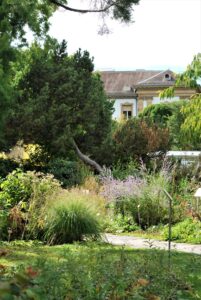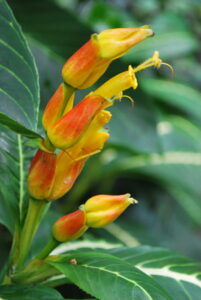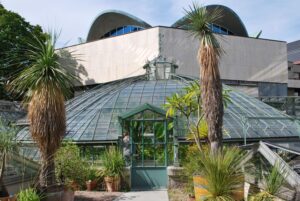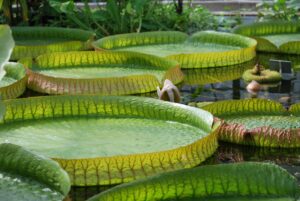The University of Basel’s Botanical Garden

The botanical garden of the University of Basel is one of the oldest botanical gardens in the world. Founded in 1589 by Caspar Bauhin, it has been located at Spalengraben, next to the Spalentor, in the historical part of the city of Basel since 1898. Today, more than 7,500 different plant species from all the important habitats on Earth thrive in the garden—that’s almost three times as many species as occur wild in Central Europe! The plants can be viewed in various show houses and outdoor facilities all year round.
The gardens are open to the public during daylight hours year-round. The grounds are a peaceful place to walk around and learn about the special trees, flowers, and shrubs or to simply sit on a bench a read a book or enjoy your lunch. There are also seven themed greenhouses for you to explore.
The Tropical House is home to one of the most important biodiversity hotspots in the world— the tropical ecosystem. It was dismantled in autumn of 2019 but has been newly rebuilt and will once again open to the public in May, 2023. The new tropical house was built on the foundations of the old tropical house, so that the three-aisled structure remained. However, the new buildings are taller and more suitable for tropical plants.

A walk-in Cloud Forest Greenhouse has been newly built for tropical mountain plants—the first cloud forest house in Europe that is open to the general public. In this house, you will find many rare tropical mountain plants, including orchids, mosses, fuchsias, and bromeliads that can grow only in this special damp-cool tropical mountain climate.
The Succulent House is home to plants that grown in dry, hot regions of the Earth. It is divided into two parts. One part features plants from the New World of North and South America. Here you can see mainly, but not exclusively, cacti, with the largest specimen dating back over 100 years. The back section houses plants from the Old World, especially from Africa.
The Cold House differs from other greenhouses in that it houses potted plants that change their location during the year. Numerous cold-sensitive, Mediterranean larger potted plants that spend their summer outside are brought in over the colder months. The display cases also show exceptionally colorful bulbous plants from the southern hemisphere, mainly South Africa, which bloom during our winter. In summer months, the greenhouse climate is changed to a warm tropical climate and numerous Amorphophallus species bloom.

The Victoria House, built in 1898, is one of the few surviving Victoria houses in Europe, and with its striking silhouette, is the inspiration of the garden’s logo. An imposing Amazon water lily forms leaves up to two meters in diameter, which dominate the heated central pool in the warmer months. In this house, you will also find an amazing abundance of tropical swamp and aquatic plants, such as mangroves, rice, floating ferns, arum plants, and much more.
The Namibia House is dedicated to the desert plants of South West Africa. In its extreme drought, plants thrive that can only survive thanks to special adaptations. A very special plant is the strange Welwitschia mirabilis, a native to the driest areas of Namibia. Although this extremely rare plant can live for thousands of years, it only develops two leaves that grow at its base for life. The “living stones” plants and many other desert plants also grow here.

The Moss House, which is at the center of the primeval garden, contains inconspicuous and very old moss-like plants, lycopods, and ferns.
The botanical garden offers lunchtime and evening tours on various topics to interested parties in the warmer months (in German); check their website for the schedule. The tours require no registration and are free; however donations are graciously accepted.
The Botanical Gardens are open daily, including weekends and holidays. Dogs are not allowed and admission is free.
There is no public parking in the area; therefore, it is recommended to come on foot or by public transport (tram 3, bus 30 and 33).
https://botgarten.unibas.ch/en/
Share



